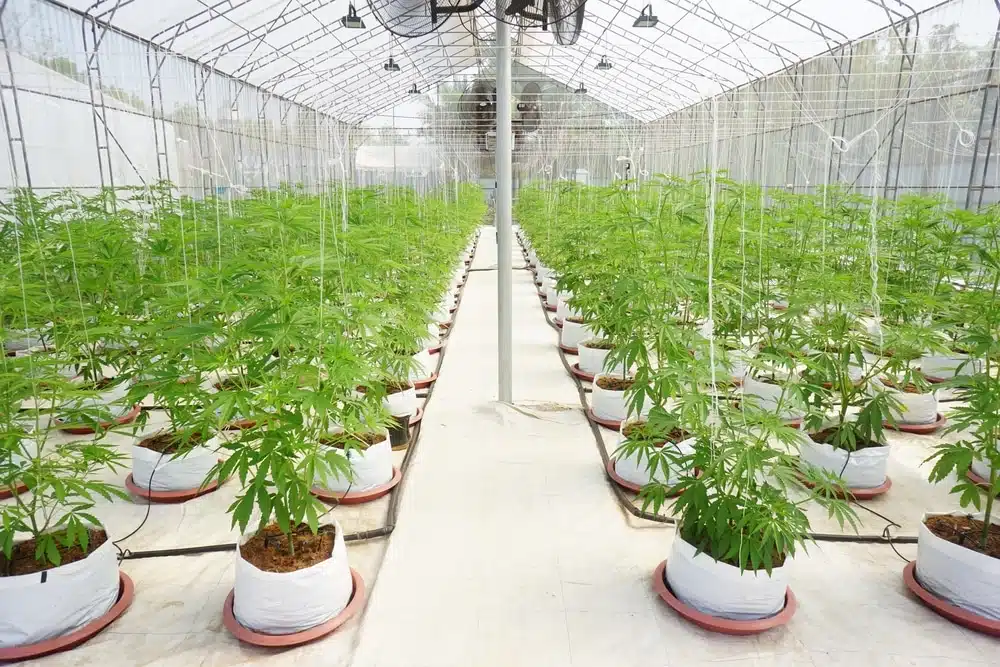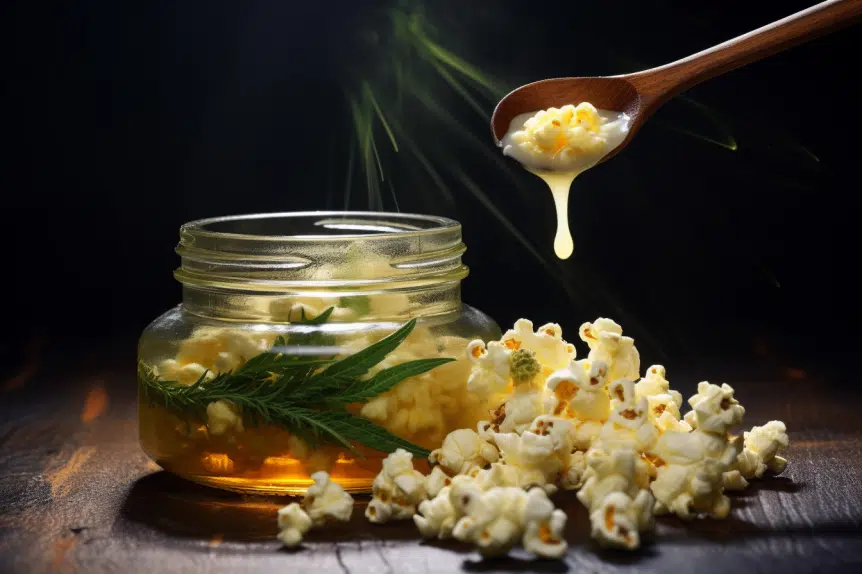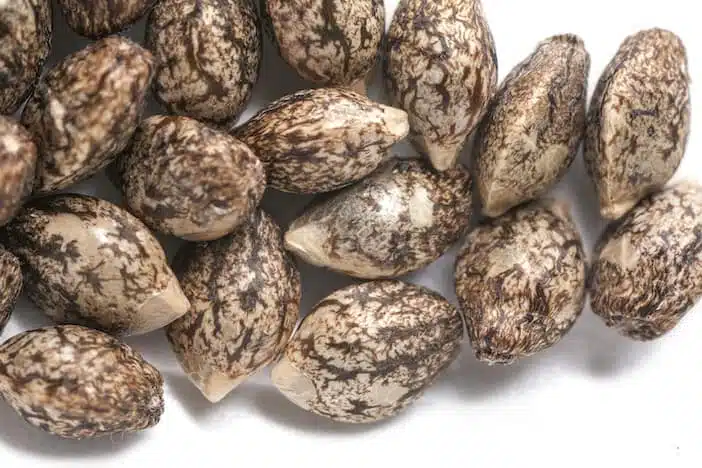Growing Marijuana in Containers
Worried you have little knowledge about growing marijuana in containers? Don’t worry, as this article has all the answers you need.
Containers provide a practical way to care for your weed plant. You have the advantage of cultivating in a small space. It’s also a more controlled growing method, because you’re operating from one pot.
So, roll up your sleeves, and dive headfirst into the world of cultivating cannabis in pots.
Growing cannabis in containers
Growing marijuana in containers involves picking a medium and planting the marijuana seeds. You then nurture the crop, adding water and nutrients as needed.
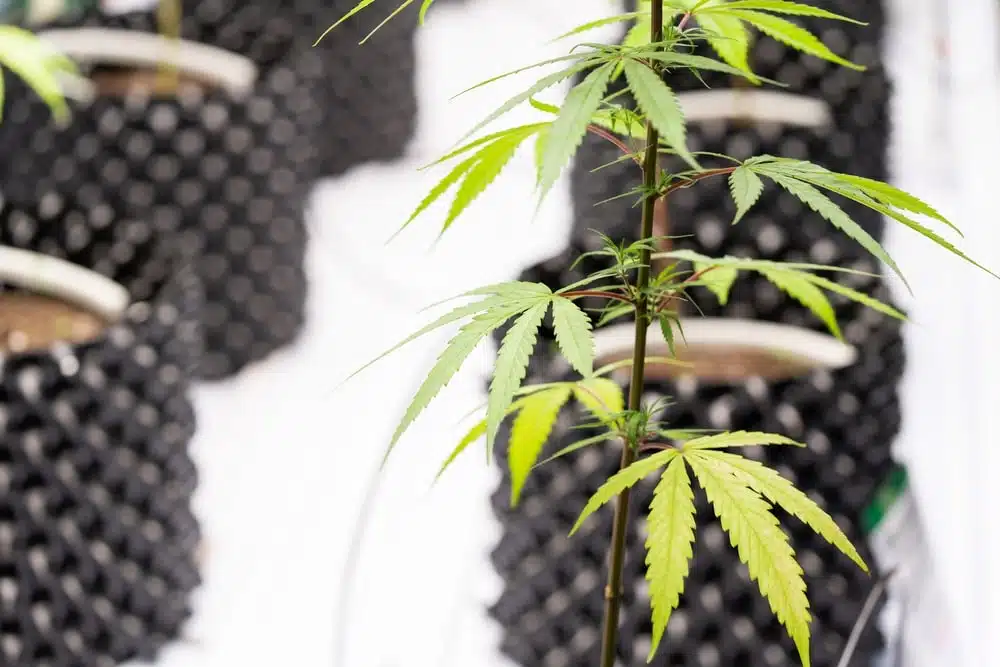
The benefits of growing marijuana in containers
Cultivating cannabis seeds in pots is a versatile and accessible option for enthusiasts. You can do this regardless of your cultivation experience or available space. Two major benefits stand out: flexibility and convenience.
The flexibility and convenience of container growing
Container marijuana cultivation has the following advantages:
- It offers privacy and security. Confining your plants in containers minimizes visibility and helps maintain a low profile.
- It provides space efficiency for growing marijuana in compact areas.
- It gives you enhanced harvest control.
- It provides mobility to your plants as needed.
Why container gardening works well for cannabis
Growing cannabis in containers has the following advantages:
- It keeps your plants off the ground and reduces the risk of soil-borne pathogens.
- It allows you to customize the growing conditions to suit the crops’ specific needs.
Choosing the right containers for your cannabis plants
Once you pick the best marijuana seeds, it’s vital to choose the correct container. A pot that fosters healthy root development is the best option.
You need a container with the following properties:
- Proper drainage
- A free flow of oxygen
- Adequate nutrient absorption
- Sufficient space for the weed plant
Different types of containers for cannabis
Cultivation containers vary by size, shape, and style of perforation. Common ones include plastic, fabric, and air pots.
Comparing plastic pots, fabric pots, and air pots
Plastic pots are widely available, affordable, and durable. They’re good at moisture retention and provide insulation against temperature fluctuations. On the downside, they don’t offer much breathability, which can affect root health.
Fabric pots allow air transfer, stimulating root development and preventing root circling. Their porous nature facilitates better oxygen exchange and prevents water-logged soil. One disadvantage is they tend to dry out faster. The fabric material can also degrade over time.
Air pots have a unique perforated design that promotes excellent air circulation. The drawback is they’re expensive. They also have a higher rate of moisture evaporation. Take care during transplanting, as the roots can entangle with the openings in the pot.
Choosing the right container for your growing style
To choose the right container, identify your growing style. Options include soil-based, hydroponic, aquaponic, or a mixture. Then, consider the following factors:
- Portability and space
- Aeration
- Personal preference and experience
- Drainage
- Reusability
- Container size
Sizing containers for different stages of growth
Picking the correct container gives your plants the space they need to thrive.
Selecting the right container size for seedlings, veg, and flower
The pot configuration for the different marijuana growing stages is as follows:
- Seedling Stage: Start with small pots or seedling trays with a capacity of 4–8 ounces. It allows easy monitoring and prevents excessive moisture retention.
- Vegetative Stage: Move your plants into 1–5 gallon containers. Smaller crops thrive in 1–2 gallon pots, while larger ones benefit from 3–5 gallons.
- Flowering Stage: Transplant your plants into larger containers to support their growth and optimize yields. Choose pots with a 5–10 gallon capacity to accommodate the expanding root system.
The impact of container size on plant health and yield
The container’s size influences the plant’s root development and nutrient uptake.
Large containers have the following impact on plant health and yield:
- They provide adequate space for root expansion. This allows for a healthier and more extensive root system.
- They offer a greater reservoir of nutrients and water. This provides a stable and consistent plant supply.
- They retain water for longer periods, reducing watering frequency.
- They support taller, bushier crops with a larger canopy. Well-developed foliage translates to increased photosynthesis, more bud sites, and potentially higher yields.
- They reduce the need to transplant frequently and minimize stress. This promotes uninterrupted growth and healthier plants.
- They provide better insulation for the roots in hotter climates.
Small containers have the following impact:
- They’re helpful in hot climates, as they dry out more quickly. They reduce the risk of overwatering and minimize potential root issues.
- They’re suitable for indoor setups with limited space.
- They’re ideal for the germination stage.
Preparing your containers for cannabis cultivation
Ensuring your pots are ready when growing marijuana in containers is a crucial step. Many get the right-sized cylinders, but end up unsuccessful because they overlook other factors.
One thing to consider is the drainage of your container. Check for sufficient draining holes, as they prevent water-logging and root rot.
Ensure you have a nutrient-rich grow medium, such as a potting or soil mix.
The importance of drainage in cannabis containers
In cannabis cultivation, too much water is bad, as is too little. You need a balance between these two extremities. These are the benefits of a properly draining container:
- It maintains the right nutrient levels and promotes balanced absorption. This prevents mineral toxicity and an accumulation of plant sustenance.
- It encourages healthy root development and enables them to access nutrients easily.
- It reduces the risk of disease by ensuring the soil stays dry between waterings.
- It stimulates adequate oxygen exchange, supporting healthy root development and overall plant performance.
Ensuring proper drainage in your pots
For proper drainage, ensure your pots have sufficient drainage holes at the bottom. If necessary, drill additional openings for adequate water flow.
Use tools like saucers or trays to collect excess water from the container. Regular moisture disposal adds to your drainage efforts.
Ensure you use a well-draining growing medium. Avoid compacted soils that impede drainage.
How overwatering can impact cannabis health and yield
Here’s how overwatering can impact cannabis plants in containers:
- It can lead to root suffocation
- It can result in nutrient imbalances
- It can increase the risk of disease
- It can cause growth stagnation
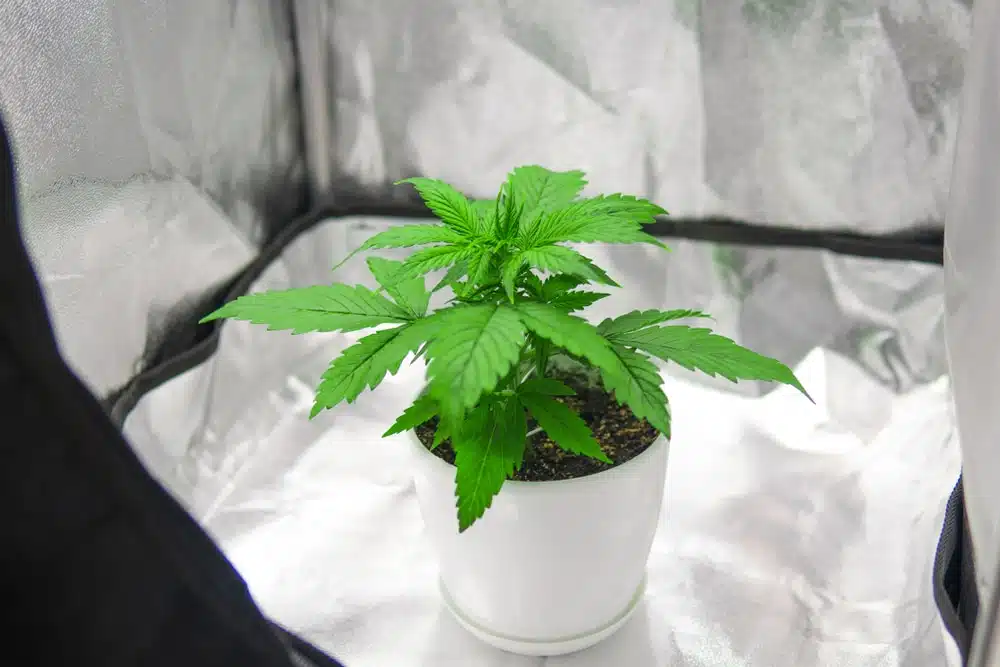
The best soil mixes for container-grown cannabis
One suitable soil mix is high-quality potting soil. It contains a balanced blend of peat moss, perlite, and compost. It provides good water retention and ample nutrients.
Coco coir is another popular soil mix alternative. It consists of coconut husk fibers. It has excellent water retention and aeration properties. Pests and diseases are unlikely in this medium, as it doesn’t support them like other substrates.
Custom blends are ideal if you prefer personalized soil mixes. You can create them by combining various organic amendments.
Choosing the right soil for your containers
When selecting a soil mix, it’s important to consider several factors. Regardless of your choice, track these variables throughout the plant’s life cycle:
- Nutrient levels
- The pH of the soil
- Proper watering practices
Adding beneficial amendments to your cannabis soil mix
The good thing about most soil mixes is that you can control the nutrient level. You directly influence the plant’s general productivity and health.
One popular amendment is compost for cannabis. It provides a rich source of organic matter, beneficial microorganisms, and essential nutrients. Worm castings are also a good source of beneficial microbes.
Kelp meal is ideal if your aim is robust development and flowering. It contains natural growth hormones. Mycorrhizal fungi establish a symbiotic relationship with plant roots, enhancing nutrient uptake.
Your weed plant also benefits from bat guano and fish emulsion. They contain nitrogen, phosphorus, and potassium, the essential NPK nutrients for weed.
The ins and outs of growing cannabis in containers
There are a few key things to know before embarking on a cannabis cultivation journey:
- Knowing which weed strains are best for your container and how to grow them.
- Understanding the different weed growth stages.
- Harvesting your mature buds.
Planting cannabis seeds or clones in containers
Planting begins the delicate process of pot growing. It marks the beginning of the care you give your marijuana plants until harvest.
There are two ways to start a young cannabis plant in your container-filled soil mix. Either you sow the seeds and let them germinate, or you plant a clone and let it take root.
So, what’s the proper way to plant weed in containers?
The proper way to plant cannabis in containers
The process for planting cannabis is as follows:
- If starting from seeds, germinate them in seedling trays.
- Transplant them into a container once the seedlings have a robust root system and a few sets of leaves. If using clones, remove them from their original pots and place them into new ones.
- Create a small hole in the soil and gently insert the seedling. Be gentle to avoid damaging the root and stem system.
- Bury the roots deep enough so the soil covers the root ball completely. The base of the stem should be just above the dirt level to prevent rotting.
- Water the container thoroughly until water drains from the bottom. It helps settle the soil around the roots and ensures proper hydration.
Caring for your seedlings in the early stages
Early care sets the basis for your plant’s growth. Follow these steps to ensure your seedlings thrive:
- Place the container in a location that provides adequate light. Ensure the temperature, humidity, and airflow are appropriate for the seedling stage. Maintain levels of 75–80°F with 70–80% RH.
- Regularly monitor the moisture levels in the soil. Ensure you understand how to water cannabis seedlings. Provide little nutrients at this stage, because seedlings don’t require much.
Navigating the vegetative and flowering stages
Watching your plant go through its different growing stages is exciting. Here, we tell you how to navigate the vegetative and flowering stages.
Maintaining your cannabis plants during the veg stage
Cannabis plants undergo vigorous growth during the vegetative stage. They develop a strong root system and lush foliage. Strive to do the following:
- Provide your cannabis plants with high-quality blue light spectrum grow lights.
- Aim for 18–24 hours of light daily to promote robust growth.
- Maintain a suitable temperature of 70–85°F during the day hours and 60–75°F during night hours.
- Keep the humidity at around 50–70%, decreasing by 5% each week until flowering. Don’t go below 40%.
- Water your cannabis plants when the top inch or so of the soil feels dry. Avoid overwatering, as it can lead to root problems.
- Implement training techniques at this stage if needed.
Transitioning your cannabis to the flowering stage in containers
This phase triggers the development of buds. Care for your plant in the following ways:
- Adjust the lighting schedule to induce flowering. Provide a 12/12 cycle of uninterrupted darkness and light daily.
- Transition to a bloom or flowering nutrient formula. It’s higher in phosphorus and potassium and lower in nitrogen.
- Ensure your cultivating space is light-tight to avoid disrupting the flowering cycle.
- Consider pruning and training to optimize light penetration and airflow throughout the canopy. Halt all training.
- Maintain a slightly cooler temperature range of around 65–80°F during the day and 40–50% humidity.
Harvesting and curing container-grown cannabis
Knowing when and how to harvest weed requires knowledge of certain factors. For example, the strain’s flowering period, trichome color, and desired effects. Proper drying and curing of harvested marijuana is crucial to preserve its potency.
Determining when to harvest your container-grown cannabis
Most marijuana strains are ready to harvest within 10–32 weeks from germination. Here’s how to determine if your buds are mature:
- Observe as the trichomes change color from clear to milky to amber. Amber trichomes indicate your buds ready for harvest.
- Consult with breeder’s guidelines to get strain-specific info on the life cycle time.
- Check the pistils. When they change from white to brown, they’re ready to harvest.
Proper techniques for drying and curing your harvest
Drying and curing weed has several benefits. Drying removes moisture and reduces the chances of mildew and mold growth. Curing preserves the plant’s cannabinoids and terpenes.
For optimal drying and curing conditions, consider the following:
- Trim away large fan leaves, but keep the sugar leaves.
- Maintain a temperature of around 60–70°F in the drying room.
- Ensure a 45–55% humidity level.
- Once trimmed and dried, transfer the buds into glass jars with airtight lids.
Overcoming challenges in container cannabis cultivation
When cultivating marijuana using containers, it’s not unusual to run into problems. Most experienced cultivators run into these issues as well.
Diagnosing and solving common container growing problems
Common problems that plague container growers are overwatering, nutrient management, pests, and diseases.
Beginners can take marijuana growing classes to learn how to solve these problems. Here’s how experienced cultivators handle these issues.
Dealing with overwatering and nutrient issues
For overwatering issues, strike a balance between preventing dehydration and overwatering. One way to do this is by acquiring well-draining soil and a pot with proper drainage holes.
For nutrient issues, the limited soil volume may deplete nutrients faster. It may necessitate regular monitoring and adjustment of nutrient levels. Doing this ensures optimal plant health and prevents deficiencies or nutrient burn.
Tackling pests and diseases in container grows
Container-grown cannabis crops are at risk of pests and diseases like plants in the ground. If not correctly controlled, pests like fungus gnats and aphids infest them and cause serious problems.
Here’s how to handle this issue:
- Monitor the plants for signs of pests and diseases.
- Consider cultivating cannabis strains with resistance to pests and diseases.
- Ensure adequate airflow around your plants to keep pathogens at bay.
- Maintain a clean growing environment. Regularly remove debris and dead plant material that can harbor pests or diseases.
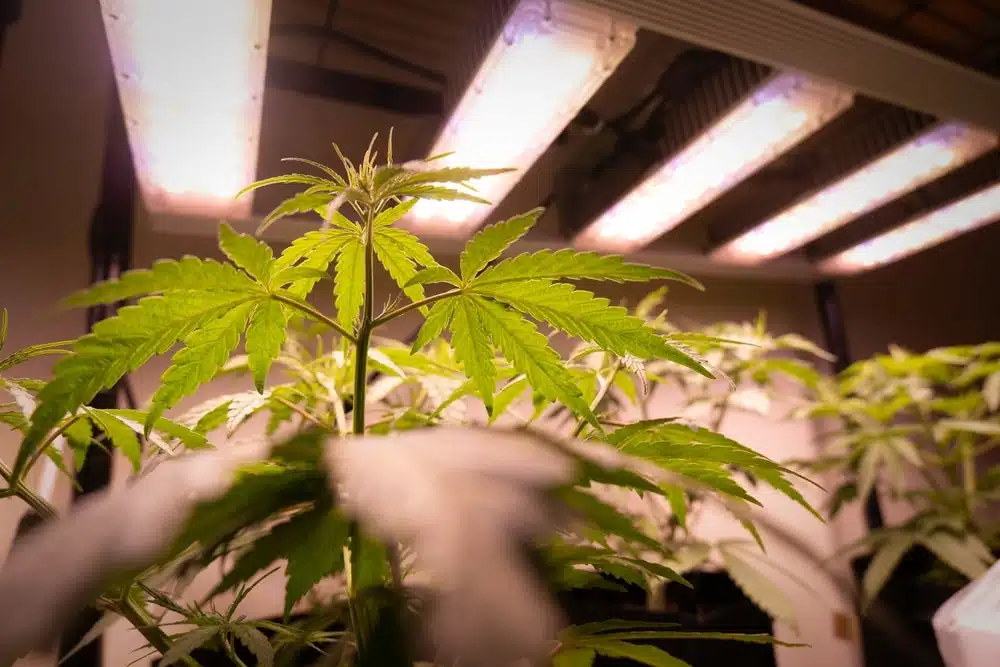
Optimizing your container garden for maximum yield
Cultivating marijuana on a small scale using containers can also guarantee maximum yields. For this to happen, you need to control factors like light, temperature, water, and oxygen.
Techniques for boosting yield in container grows
Growing pot in containers is an art and requires the following tactics:
- Selecting a strain with high-yielding properties.
- Following proper watering practices.
- Choosing the right container size for different stages of growth.
- Incorporating strategic pruning and defoliation.
- Providing optimal lighting.
- Using various training techniques.
- Implementing a rigorous nutrient regimen.
The benefits of training and pruning your cannabis plants
The advantages of training and pruning your plants include enhanced yield and quality. More benefits include:
- Increased light penetration to lower branches and bud sites.
- More bud sites.
- Improved air circulation.
- Height management
- Enhanced cannabinoid production, as the plant redirects energy to the remaining branches and bud sites.
- Reduced stress due to the weight of heavy buds.
- Enhanced overall aesthetic appearance.
Contain your marijuana the right way and reap the rewards
Growing marijuana in containers has never been easier. Both beginners and veterans can enjoy the benefits of cultivating marijuana in pots.
The rewards of growing marijuana in containers
The benefits revolve around flexibility and control. Container cultivation also gives you the satisfaction of having your own homegrown buds. If you become an expert, you could even become an entrepreneur in this industry.
Appreciating the flexibility and control of container gardening
Container cultivation allows you to grow buds in any indoor environment. You control all the environmental factors, including nutrition, water, medium, climate, and space.
It allows cultivation in areas where traditional ground planting isn’t feasible. You can place pots on balconies, patios, or rooftops. It also empowers you to experiment with techniques and refine your growing practices.
The satisfaction of harvesting your own homegrown cannabis
Regular visits to the dispensary aren’t necessary with container growing. You save money and enjoy higher quality buds.
The rewards of growing your marijuana offer you peace of mind, because you’re in charge of the growth process. You know exactly what you consume every time you roll a joint or make an edible.
Further resources for container cannabis growers
There are several resources you can use to get more information on cannabis container cultivation. They include guides, books, online forums, supply stores, and other community resources.
Recommended guides, books, and online forums
If you want to learn more about growing cannabis in containers, check out these resources:
- Cannabis: A Beginner’s Guide to Growing Marijuana by Danny Danko
- Online blogs like Grow Weed Easy
- Online forums like Reddit
Community resources and supply stores for container growers
Several options are available regarding community resources and supply stores for container cultivators. Here are some recommendations:
- Engage with local gardening communities. For example, community gardens and horticultural societies. They provide valuable resources and support for container growers.
Online seed stores can guide you in container cultivation and offer great deals. Buy cheap cannabis seeds at The Seed Fair and enjoy budget-friendly prices.

